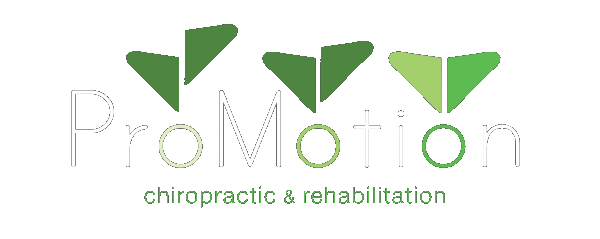There have be recent advances in osteoarthritis (OA) and cartilage research that have changed what we know to be true about OA. In light of new evidence, clinicians should alter their interactions and protocols with regard to patients affected by OA. It has been widely believed for many year that people suffering with arthritis will need a joint replacement eventually and that that is the only option. It is also widely believed that cartilage will not regrow or become healthy again.
Patients are often told that reducing weight is the most effective way to decrease OA associated joint pain because it decreases the impact on the joint and the stress on the cartilage. However, recent research has shown that it is not so much the weight, but the percentage of body fat (1). A higher percentage of body fat has been shown to increase cartilage loss over time, while a higher percentage of lean muscle mass is associated with maintaining cartilage over time. Obesity has been shown to predict the progression of hand OA, which is not a weight bearing joint, so how does increased weight contribute to that? Further research found that obesity contributes to inflammatory responses in the joint which affects the cartilage and its ability to repair and thus can add to the progression of OA.
A commonly held belief is that once there is no cartilage left on a joint surface it will only get worse with more activity. Activities like bike riding, which don’t involve impact or loading of the joint, are preferred because they don’t wear the cartilage down more. As it turns out, cartilage loves loading. It has been found that astronauts after having spent substantial time in space have thinner cartilage upon returning to earth which is less healthy. In contrast, marathon runners have been shown to have thicker, more healthy cartilage than “normal” individuals (2). Cartilage doesn’t get its nutrients like other tissues of the body because cartilage doesn’t have a blood supply. Cartilage gets it nutrients through compression and load, by physically pushing the nutrients into the cartilage tissue. Furthermore, compression and load stimulates chondrocytes (the cells of cartilage) to make collagen and aggregan (parts of your cartilage) and loading also creates daughter cells that help repair cartilage. Instead of the “wear and tear” that we always think of, cartilage can “wear and repair”
Lastly, another part of this myth is the psychologic message that “wear and tear” sends. It casts the shadow that joint replacement is inevitable and there are no alternatives. It assumes that he joint will continue to wear out so you’d better get used to it. These ideas are, however, not evidence based. The body, even the cartilage, is “bioplastic”. That means that the body has the ability to change and adapt, even the bones and cartilage. Exercise and activity has been shown to improve cartilage health in people with OA and to decrease the system wide inflammation associated with OA (5, 6).
This isn’t to say that all joint replacements are unnecessary and ill-advised. Certainly many people need this procedure and have favorable outcomes. There are 10-34% who do have unfavorable long term outcomes, such as moderate to severe pain, two to five years after a total knee replacement (7).
van der Kraan PM. Osteoarthritis year 2012 in review: biology. Osteoarthritis Cartilage. 2012 Dec;20(12):1447-50. doi: 10.1016/j.joca.2012.07.010. Epub 2012 Aug 13. PMID: 22897882.
Smith, David & Gardiner, Bruce & Zhang, Lihai & Grodzinsky, Alan. (2019). Articular Cartilage Dynamics. 10.1007/978-981-13-1474-2.
Berthelot JM, Sellam J, Maugars Y, Berenbaum F. Cartilage-gut-microbiome axis: a new paradigm for novel therapeutic opportunities in osteoarthritis. RMD Open. 2019;5(2):e001037. Published 2019 Sep 20. doi:10.1136/rmdopen-2019-001037
Gwilym SE, Keltner JR, Warnaby CE, Carr AJ, Chizh B, Chessell I, Tracey I. Psychophysical and functional imaging evidence supporting the presence of central sensitization in a cohort of osteoarthritis patients. Arthritis Rheum. 2009 Sep 15;61(9):1226-34. doi: 10.1002/art.24837. PMID: 19714588.
Naugle KM, Ohlman T, Naugle KE, Riley ZA, Keith NR. Physical activity behavior predicts endogenous pain modulation in older adults. Pain. 2017 Mar;158(3):383-390. doi: 10.1097/j.pain.0000000000000769. PMID: 28187102.
Wallis JA, Taylor NF. Pre-operative interventions (non-surgical and non-pharmacological) for patients with hip or knee osteoarthritis awaiting joint replacement surgery--a systematic review and meta-analysis. Osteoarthritis Cartilage. 2011 Dec;19(12):1381-95. doi: 10.1016/j.joca.2011.09.001. Epub 2011 Sep 10. PMID: 21959097.
Beswick AD, Wylde V, Gooberman-Hill R, Blom A, Dieppe P. What proportion of patients report long-term pain after total hip or knee replacement for osteoarthritis? A systematic review of prospective studies in unselected patients. BMJ Open. 2012 Feb 22;2(1):e000435. doi: 10.1136/bmjopen-2011-000435. PMID: 22357571; PMCID: PMC3289991.

